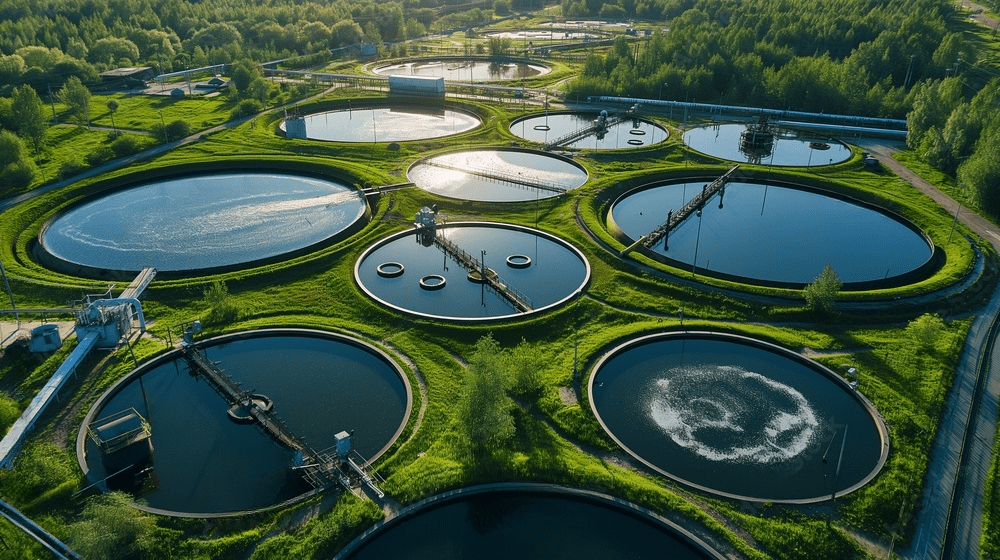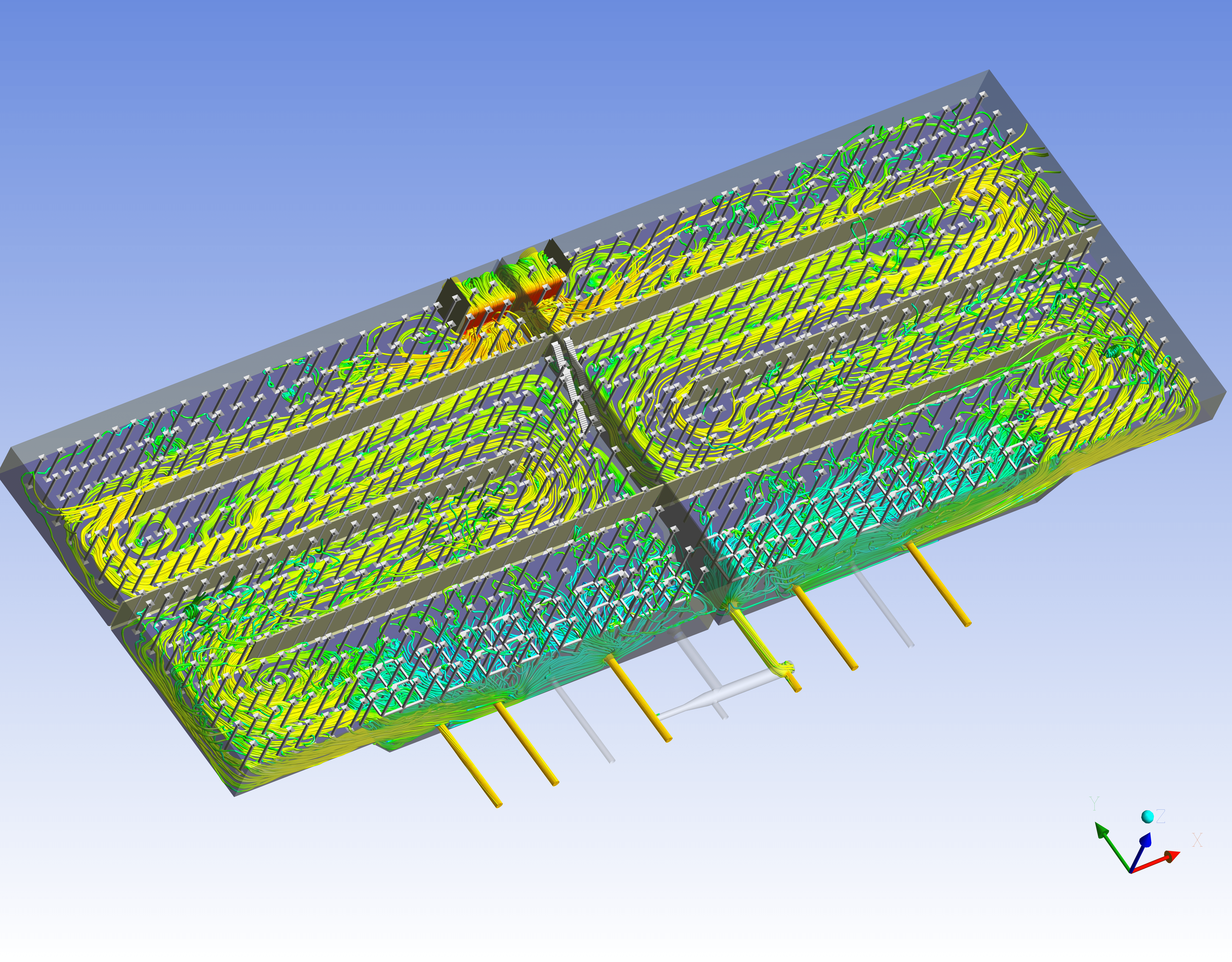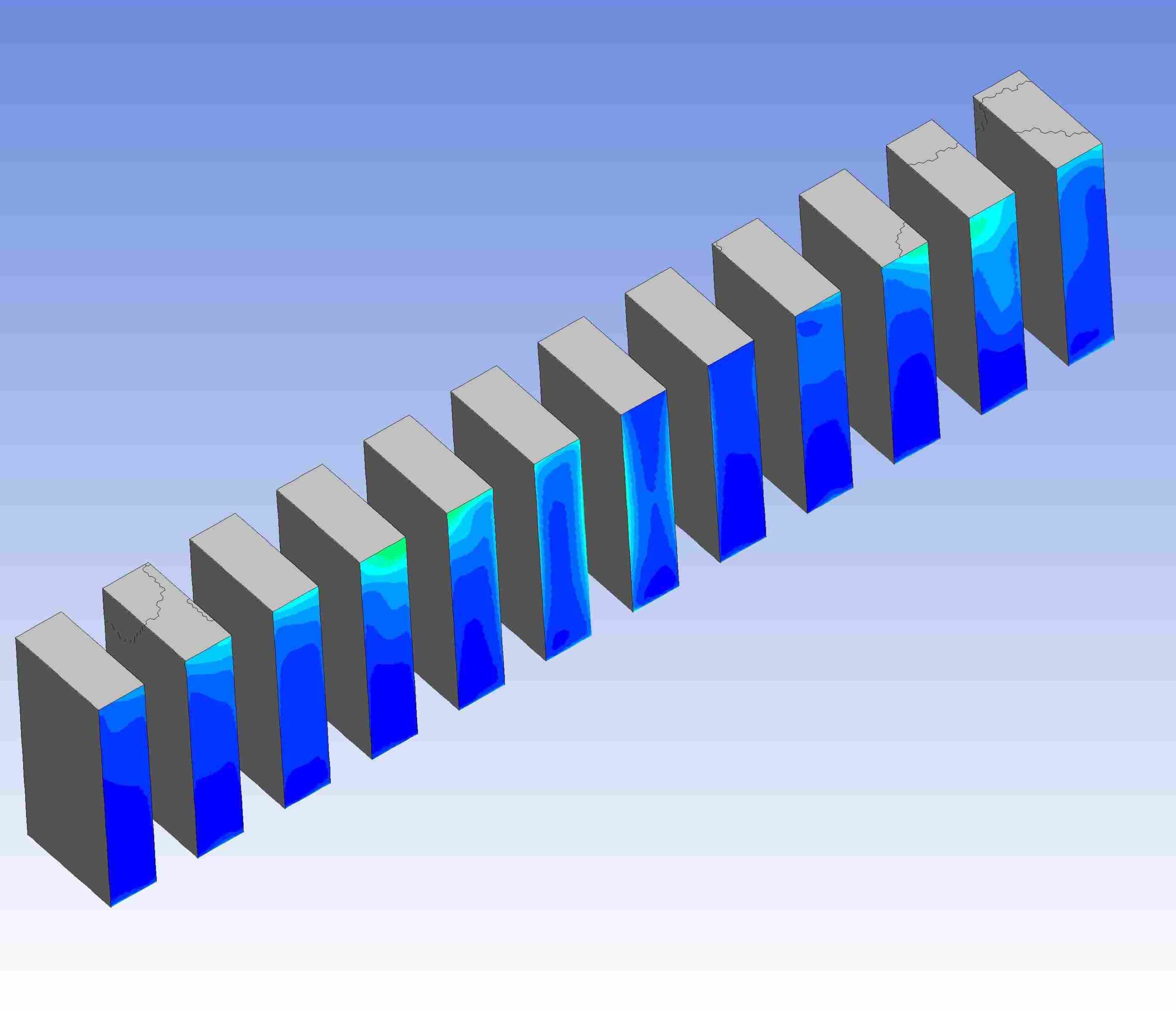At Mechartes, we offer specialized Computational Fluid Dynamics (CFD) analysis services tailored to the needs of water treatment and infrastructure systems. Our expertise spans steady-state and transient multiphase CFD analysis, allowing us to optimize water flow profiles, assess hydraulic conditions, and enhance system performance across a range of components, including reservoirs, sumps, drop structures, and manifolds. For reservoirs, we conduct detailed CFD analyses focusing on baffle arrangements, flow rates, and water level conditions. This approach helps us estimate residence time, identify recirculation regions, and ensure efficient mixing and uniform distribution. In pump intake systems, we assess potential adverse hydraulic conditions, such as surface and submerged vortices, to optimize pump performance. Our adherence to ANSI/HI 9.8 guidelines ensures compliance with industry standards for velocity variations and vortex formation.
Additionally, we offer specialized CFD modeling for anoxic tanks, chlorine tanks, and drop structures. Our analyses validate flow profiles and mixing efficiency, considering factors like submersible pumps, nozzle openings, and various inflows. This enables us to provide valuable recommendations and explore alternative design options. Our capabilities also extend to complex structures like vortex drop shafts and backdrop structures, where we perform both steady-state and transient analyses. We aim to confirm satisfactory flow conditions, prevent surcharging, establish energy dissipation requirements, and evaluate the need for air venting.
In sea water intake systems, including inlet channels, outlet channels, and pumping stations, we use CFD analysis to model flow characteristics within the manifold. This allows us to pinpoint inefficiencies or areas of turbulence, ensuring optimal design and operation. Our comprehensive approach ensures that each component functions efficiently, meeting both performance and regulatory requirements.












